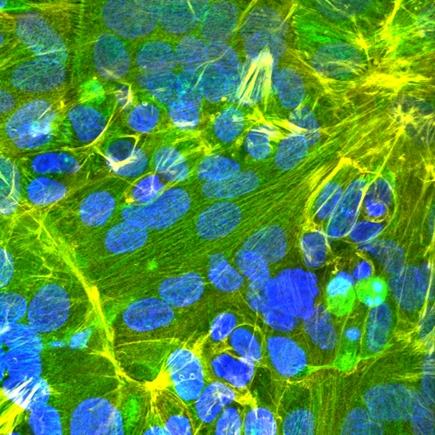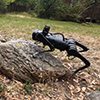Nov 18, 2022 (Nanowerk News) A research team from Jena (Germany) and Turin (Italy) has reconstructed the origin of an unusual gravitational wave signal. As the researchers write in the scientific journal Nature Astronomy ("GW190521 as a dynamical capture of two nonspinning black holes"), the signal GW190521 may result from...
New model describes the boiling process with much greater precision
Nov 18, 2022 (Nanowerk News) When a liquid boils in a vessel, tiny vapor bubbles form at the bottom and rise, transferring heat in the process. How these small bubbles grow and eventually detach was previously not known in any great detail. A German-Chinese research team under the leadership of...
Quantum dot islands could reveal secrets for powerful technologies
Nov 18, 2022 (Nanowerk News) Researchers at the National Institute of Standards and Technology (NIST) have created grids of tiny clumps of atoms known as quantum dots and studied what happens when electrons dive into these archipelagos of atomic islands. Measuring the behavior of electrons in these relatively simple setups...
A chip to replace animal testing
Nov 17, 2022 (Nanowerk News) New drugs made from nanoparticles that can easily penetrate any interface within our bodies are a great hope in medicine. For such hopefuls to reach the market, their safety must be ensured. In this context, it must also be clarified what happens if a substance...
An on-chip time-lens generates ultrafast pulses
Nov 17, 2022 (Nanowerk News) Femtosecond pulsed lasers — which emit light in ultrafast bursts lasting a millionth of a billionth of a second — are powerful tools used in a range of applications from medicine and manufacturing, to sensing and precision measurements of space and time. Today, these lasers...
High-power electrostatic actuators to realize artificial muscles
Nov 17, 2022 (Nanowerk News) Electrostatic actuators are simple and lightweight devices that emulate human muscles. However, their usage has primarily been restricted to moving small devices since they need high voltages to generate significant forces. Now, however, it may be possible to use electrostatic actuators in artificial muscles thanks...
A low-cost robot ready for any obstacle (w/video)
Nov 17, 2022 (Nanowerk News) This little robot can go almost anywhere. Researchers at Carnegie Mellon University's School of Computer Science and the University of California, Berkeley, have designed a robotic system that enables a low-cost and relatively small legged robot to climb and descend stairs nearly its height; traverse...
Smart gifts will soon unwrap themselves (w/video)
Nov 17, 2022 (Nanowerk News) With the help of the high-brilliance X-ray source PETRA III, a German-Swedish research group has developed a new cellulose polymer material that can be specifically animated to move by moisture, making it an ideal base material for programmable actuators. In addition, the composite material is...
Scientists explore electronic materials with nanoscale curved geometries
Nov 17, 2022 (Nanowerk News) In a recently published paper in Nature Electronics ("Electronic materials with nanoscale curved geometries"), an international research group from Italy, Germany, the UK, and China examined significant development directions in the field of electronic materials with curved geometries at the nanoscale. From microelectronic devices with...
Nanoribbons can dramatically improve batteries
Nov 17, 2022 (Nanowerk News) Phosphorene nanoribbons (PNRs) are ribbon-like strands of the 2D material phosphorous, which, like graphene, are made of single-atom-thick layers of atoms. They were first created in 2019 ("Individual 2D phosphorene nanoribbons made for the first time") by a team led by Professor Chris Howard of UCL...










